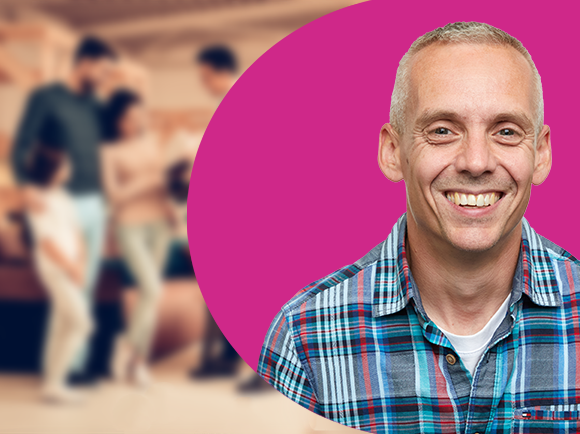3 tips for retailers navigating a changing BNPL market

Change is the only constant in life. The same is of course true for the Buy Now Pay Later (BNPL) market. Inflation, evolving business models, and forthcoming regulatory changes are each set to impact the way the sector operates.
In this article, we briefly consider these three factors, their influence on the BNPL market, and what retailers can do to navigate the changing conditions.
Interest rates: Up, up and away?
Interest rates are rising, which is making borrowing more expensive. This, in turn, is eating away at the profitability and competitiveness of BNPL providers.
Already, many of the big players in the BNPL market have taken preemptive steps to weather the impending macroeconomic storm. Those borrowing from secondary markets know that they may continue to feel the squeeze, as central banks work hard to get inflation under control.
At the same time, BNPL remains a popular choice with consumers, as they seek flexible ways to finance their purchases. However, with the ongoing cost of living crisis and looming recession, there is a real possibility that popularity could start to wane, as consumers scale down their spending.
Worst still, there is a risk that – should consumers continue to finance purchases through BNPL at a time when their real income is decreasing – the sector may start to see climbing default rates. This would of course lead not only to costs incurred trying to recover these debts, but negative press for the sector. All of this could amount to a substantial storm for BNPL lenders, providers and platforms.
But we believe retail finance providers who partner with Tier 1 lenders such as banks are well-positioned to weather this storm.
Being as cash-rich as they are, banks are one of the few institutions capable of passing through a recession without feeling a significant impact to their liquidity and securities. Lending off the balance sheet of a Tier 1 institution, –will give retailers (and indeed consumers) greater peace of mind.
Moreover, partnering with a bank is a huge advantage from a profitability standpoint. Providers working with Tier 1 lenders are able to sidestep the additional costs of borrowing from secondary markets, thus ensuring their competitiveness and profitability remain intact.
This matters to merchants now more than ever. As spending tightens, BNPL providers will be looking to recoup costs. Standard merchant fees are currently between 1.5% and 7%, but these may soon increase, especially if more consumers opt for checkout finance as a means of managing their finances.
Tip: Consider partnering with Tier 1 financial institutions to side-step increasing costs.
The watering down of BNPL business models
As was to be expected, some of the more successful players in the BNPL market are starting to reduce their reliability on retail finance and diversify their businesses by pursuing other revenue streams.
It’s tempting to believe this was always the plan – then again, it may also be that some businesses are pivoting out of a need to adapt to the changing economic landscape.
In either case, those transitioning away from solely operating as a merchant service are less likely to be putting their merchants at the heart of their enterprise.
Meanwhile, there are those who are attempting to double down on their lending mechanisms by moving from a point-of-sale lender to a super-app. This creates an ecosystem for consumers to discover new merchants within the provider’s platform. In doing so, these providers may be inadvertently forcing their retail clients to compete against each other, which dilutes each brand as a result.
A BNPL provider who services a large number of retailers is likely to put those retailers within categories alongside competing brands. This may be great for consumers, who are given a new ecosystem from which to purchase, but one of the only differentiating factors that remains for retailers is price.
Sure, this may create co-marketing opportunities, but with so many competing merchants within these ecosystems the more likely outcome is that retailers will become caught in a race to the bottom. For the providers, meanwhile, the priority will ostensibly remain to get more clients onto the platform.
Thus, retail finance becomes a tool through which BNPL providers lure merchants into crowded retail ecosystems. Neither the merchant nor their sales matter to the provider – for them, it is the general spend within the platform.
Tip: If your provider is committed to offering you a successful BNPL platform, this will be evident in their business model. If they’ve stretched themselves too thin, or if their model doesn’t seem consistent with your success, it may be time to look elsewhere.
Regulation: levelling the playing field?
Regulation is coming for the BNPL market, and not a moment too late.
The February 2021 Woolard Review found potential for consumer harm and called for urgent reform. Since then, Her Majesty’s Treasury has been engaged in consultations with the BNPL market, while shaping regulatory changes are due to be released imminently.
For many, these changes can’t come quick enough. Citizens Advice has reported often on the potential for BNPL to affect vulnerable customers, especially young people.
Consumer groups are now also growing increasingly concerned about the relationship between the cost of living crisis and BNPL. As some shoppers reportedly turn to BNPL for essentials such as groceries, fears have been raised that cash-strapped consumers may fall into debt spirals.
However, many of these critiques ignore the positive aspects of retail finance, grouping the whole spectrum of short-term interest free credit under the umbrella of ‘BNPL’.
This is why regulation will be a positive force for the market. It will level the playing field between regulated financial institutions offering interest-free credit and BNPL providers who have, until now, exploited a loophole in the Consumer Credit Act to get ahead.
The Treasury is expected to post a response to the Woolard Review consultation within the coming weeks and the BNPL market will need to respond, quickly. For some, this has set alarm bells ringing. For those that established their business models in a fully-compliant way since the very beginning,? iIt’ll be just another day in the office.
Tip: Merchants should make sure they partner with providers on the right side of regulatory changes – sooner, rather than later, since regulation may soon up-end the current operating model of some providers.
Key Takeaway
It’s an exciting time for the retail finance sector, but a long-term outlook on the state of the market is crucial to succeed.
Merchants with existing BNPL providers should take a close look at whether upcoming changes and trends will affect their current relationships and, if so, whether it may be sensible to look at shifting environments to stay abreast of the market.
Ultimately, merchants should consider very carefully whom they partner with. What the future holds is to be seen, and change is the only guarantee – but by partnering with a retail finance provider committed to a high standard of professionalism and expertise, merchants can feel confident they’ve chosen the right relationship to support their growth.
Divido is the platform partner enabling lenders and merchants to launch their own-brand checkout finance, fast. Consumer journeys are seamless, and can be optimised to convert more customers at every point of sale, online and in-store.
Find out how Divido could help you
Further reading
BLOG
Buy Now, Pay Later vs. Short-term Interest-free Credit: why these two models matter
BLOG
BNPL Rebirth: how the forthcoming regulatory changes will benefit the sector
BLOG
How to establish retail finance as a key part of your customer journey
You might also
be interested in
Keen to know more?








